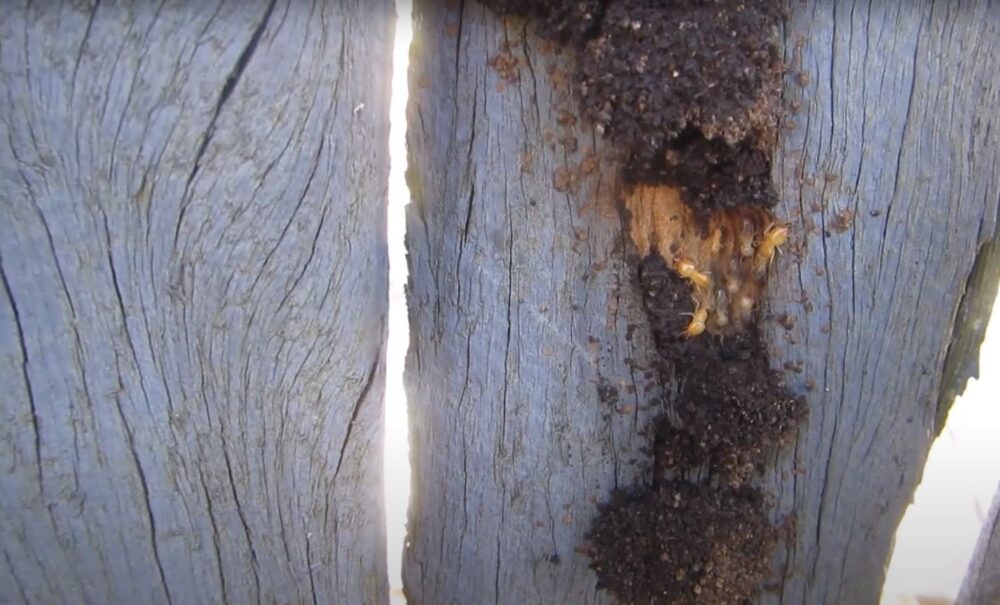Eco-Friendly Pest Protection for Timber Fences
In Auckland’s diverse neighborhoods, where timber fences are both a staple and a statement, safeguarding them against pests in an eco-friendly way is a growing concern. This article delves into various natural solutions and strategies to protect timber fences from pests without harming the environment. From natural wood preservatives to practical pest prevention methods, we explore options suited for the unique conditions of areas like Albany and Titirangi.
Natural Wood Preservatives
In the diverse suburbs of Auckland like Albany, where timber fences are both a practical and aesthetic choice, it’s important to use natural preservatives to maintain their integrity. Natural preservatives, applied to the exterior face of timber, protect against weather elements and pests like microorganisms and insects. These eco-friendly options ensure extended life for the wood without compromising environmental safety.
Types of Natural Preservatives
- Linseed Oil: Commonly used for its preservative properties and water resistance, linseed oil is a traditional choice. However, it’s flammable, slow-drying, and may leave a sticky finish, making it less ideal for modern needs.
- Tung Oil: Derived from tung trees, this 100% non-toxic sealer is a more viable option. It effectively seals out moisture and dries clear, though reapplication might be necessary annually.
Eco-Friendly Wood Sealers
- Oil-Based vs. Water-Based: The choice between oil-based and water-based sealers depends on the type of wood and the desired finish. Oil-based sealers provide better UV resistance and are suitable for woods with high absorption rates like pine and cedar, while water-based sealers, being more environmentally friendly, are ideal for woods like alder, birch, and maple.
- Transparency and UV Protection: The transparency of the sealer impacts its ability to provide UV protection. Opaque sealers offer more UV protection but cover the natural look of the wood, whereas clear sealers maintain the wood’s appearance but offer less UV protection.
- VOC Content: Volatile Organic Compounds (VOCs) in sealers can be harmful to the environment. Selecting a low-VOC or VOC-free sealer is important for eco-friendliness.
Practical Considerations
In choosing a wood sealer for timber fences in areas like Titirangi, it’s crucial to consider the balance between environmental impact, aesthetic preference, and the wood’s protection needs. Regular reapplication may be necessary, especially with natural oils like linseed or tung oil. Additionally, always check for potential flammability and the presence of VOCs to ensure a safe and sustainable choice.
In summary, selecting the right natural wood preservative for timber fences is a matter of understanding the specific needs of the wood type and the environmental considerations. For professional advice and application, engaging services like Quality Fencing Auckland can ensure your fence is not only well-protected but also aligns with eco-friendly practices
Practical Pest Prevention Strategies for Timber Fences
Protective Coatings
Applying protective coatings like termite-proof paint and oil-based stains can significantly deter pests. Especially effective on cedar or pine fences, these treatments create a barrier against termites. For enhanced protection, applying a borate-based preservative after an oil-based primer can penetrate deeper into the wood. Top this with several layers of termite-proof paint or stain, and finish with polyurethane polish or shellac-based varnishes for added moisture and sunlight damage resistance.
Plant-Based Barriers
In the lush environment of Titirangi, using plants as a natural pest deterrent is both practical and aesthetically pleasing. Surrounding your fence with strong-smelling plants like garlic, lemongrass, and mint can repel insects. In damp environments, cultivating termite-repellent plants such as catnip and velvet grass helps keep termites at bay while maintaining a garden’s beauty.
Sunlight and Moisture Control
Termites thrive in damp environments, so ensuring your wooden fence is exposed to adequate sunlight and reducing excessive moisture can be effective in termite prevention. Removing heavy shrubs and grasses around the fence prevents these pests from accessing it.
Bait Traps
Installing bait traps every 3 meters along your fence can effectively kill termites on contact. While more expensive than some other insecticides, they offer a reliable solution if other methods are insufficient.
Choosing the Right Wood
For new fence installations, opting for naturally resistant wood types like cedar, redwood, or cypress can provide long-term protection against pests without needing frequent treatments.
Routine Maintenance
Regularly cleaning and maintaining your fence, including removing nearby wood sources like wood piles and tree stumps, can prevent pests from migrating to your fence. Ensuring there’s a gap between the wood and ground also limits insect access.
By combining these strategies, you can effectively safeguard your timber fence against pests in an eco-friendly manner, ensuring its longevity and aesthetic appeal in Auckland’s diverse suburbs
Natural Repellents for Timber Fencing
Diatomaceous Earth (DE)
In Auckland’s damp climate, DE is a non-toxic, child and pet-friendly option that effectively combats a variety of pests including fleas, cockroaches, ants, and spiders. It works by dehydrating the pests as they pass through it. Apply it along the fence line and in areas where pests are frequently seen. Ensure to lay down thick lines of DE for maximum effectiveness.
Neem Oil
Neem oil is a potent natural repellent, particularly against leaf-eating insects. It’s safe for beneficial insects, making it ideal for eco-conscious Aucklanders. For DIY application, mix one cup of vegetable oil with a tablespoon of liquid soap. When ready to use, blend two teaspoons of this mixture with a quart of water and apply directly to the fence.
Smoke
Repelling pests naturally can also be as simple as using smoke. Smoke-creating devices are available, which deter mosquitoes and other pests without the need for a campfire. This method is especially useful in areas like Titirangi, where outdoor living spaces are prevalent.
Store-Bought Natural Repellents
For those in Albany who might lack the time or resources to prepare homemade repellents, there are store-bought options infused with natural ingredients like basil, lemongrass, mint, or cedar. These ready-made solutions are convenient and effective for protecting timber fences from pests.
By incorporating these natural repellents into your pest control strategy, you can maintain the integrity and beauty of your timber fences in a way that’s safe for both the environment and your family.
Risks and Considerations
While these eco-friendly methods are generally safe, it’s important to consider individual circumstances:
- Flammability: Some natural oils can be flammable.
- Reapplication: Natural treatments may require more frequent reapplication than synthetic alternatives.
- Allergies: Certain natural ingredients might cause allergic reactions in sensitive individuals.
In conclusion, adopting eco-friendly measures can effectively protect timber fences in Auckland from pests while ensuring environmental safety and sustainability. For tailored solutions and expert Auckland fence builders advice, engaging Quality Fencing Auckland can be a wise decision, ensuring your fence stays robust and pest-free for years to come.
Timber Fence Protection Frequently Asked Questions
What Are Natural Wood Preservatives?
Natural wood preservatives are eco-friendly treatments applied to timber to protect it against weather elements and pests, such as microorganisms and insects, without harming the environment.
Can I Use Linseed Oil as a Preservative?
Yes, linseed oil is a traditional natural preservative with water-resistant properties, but it has downsides like being flammable and slow-drying.
Is Tung Oil Effective for Timber Fences?
Tung oil is an effective, non-toxic wood sealer that seals moisture out, though it requires frequent reapplication.
How Does Diatomaceous Earth Work as a Pest Repellent?
Diatomaceous Earth dehydrates pests like fleas and ants, effectively eliminating them when applied in areas they frequent.
Is Neem Oil Safe for Beneficial Insects?
Yes, neem oil is effective against harmful insects but does not harm beneficial insects like ladybugs and butterflies.
Can Smoke Devices Be Used for Pest Control?
Yes, smoke-creating devices can naturally deter pests like mosquitoes without harming the environment.
Are There Ready-Made Natural Pest Repellents?
Yes, there are store-bought natural repellents infused with ingredients like basil and lemongrass, offering a convenient option.
Do Eco-Friendly Preservatives Require Regular Reapplication?
Many eco-friendly preservatives, such as natural oils, require more frequent reapplication compared to synthetic alternatives.
Can Protective Coatings Prevent Termite Attacks?
Yes, termite-proof paints and oil-based stains can effectively repel termites and protect timber fences.
Are Plant-Based Barriers Effective Against Pests?
Yes, plants like garlic, lemongrass, and mint can naturally repel insects when grown near timber fences.
Is Sunlight Exposure Beneficial for Timber Fences?
Exposing timber fences to adequate sunlight can prevent damp environments where termites thrive.
Should I Remove Shrubs Near My Timber Fence?
Removing or managing shrubs near the fence can limit insect access and reduce pest infestation.
Is It Necessary to Seal Timber Fences?
Sealing timber fences with appropriate stains or sealants is crucial for protecting them from moisture and pests.
How Can I Choose the Right Wood for My Fence?
Choosing naturally resistant wood types like cedar, redwood, or cypress can provide long-term protection against pests.
Key Takeaways on Eco-Friendly Timber Fence Protection
Natural Preservatives Are Essential
Using natural wood preservatives like linseed and tung oil is vital for protecting timber fences in an environmentally friendly manner.
Regular Maintenance and Reapplication
Frequent reapplication of eco-friendly treatments and regular maintenance are crucial for long-term fence protection and pest control.
Diverse Methods for Pest Prevention
A combination of methods, including natural repellents like Diatomaceous Earth and neem oil, along with physical barriers and good hygiene practices, effectively protects timber fences from pests.



